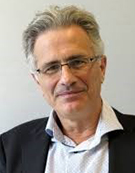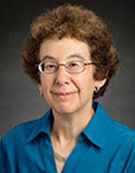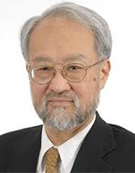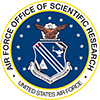Plenary Lecture
Harold Grad Lecture
 Tai-Ping Liu
Distinguished Research Fellow, Institute of Mathematics, Academia Sinica (2000-Present)
Tai-Ping Liu
Distinguished Research Fellow, Institute of Mathematics, Academia Sinica (2000-Present)
Emeritus Professor, Mathematics, Stanford University (1990-Present)Tai-Ping Liu is distinguished research fellow at Academia Sinica, Taiwan. Liu (with Yu) has conducted the quantitative analysis of the Boltzmann equation in the kinetic theory. He explicitly constructed the fundamental solution, and used it for the establishment of the invariant manifold theory for the stationary Boltzmann equation. These new techniques were used to study the nonlinear coupling of Knudsen-type boundary layers and the fluid-like interior waves, and the resulting striking bifurcation phenomena for transonic condensation/evaporation. Liu has also done extensive research on the shock wave theory, for which he has proposed the Liu entropy condition and studied the well-posed theory for system of hyperbolic conservation laws. He introduced the Green's function approach for the quantitative analysis of the Navier-Stokes equations in gas dynamics and other viscous systems. Liu also made pioneering contributions to conservation laws with sources, including relaxation phenomenon, vacuum in gas flows, stability and in stability of nozzle flows. With Elling, the long-standing Prandtl Paradox on the physicality of weak shock reflection on a supersonic pointed projectile was resolved. Liu obtained his Ph.D. from the University of Michigan. He has held professorship positions at University of Maryland, New York University and Stanford University, where he is now an Emeritus Professor. Liu is Member of Academia Sinica, Fellow of American Mathematical Society, Recipient of Galileo Galilei Medal, and other honors.Solving Boltzmann equation, Green¡¯s function approachThe relation between the Boltzmann equation and the fluid dynamics is a core subject in the kinetic theory. Within this broad subject, there is the key topic of the coupling of singular layers. Harold Grad pointed out in the 1960's that there are initial, shock and boundary layers for the Boltzmann solutions. Since there are several distinct scales and features within these layers, a constructive mathematical method is called for. The explicit construction of the Green's function for the Boltzmann equation provides the first step for such a method. The Green's function approach of effectively using the explicit structure of the Green's function allows for the analysis of the coupling of the aforementioned singular layers. The lecture describes the particle wave dual property of the Green's function, the striking bifurcation phenomena for the coupling of Knudsen-type boundary layer and the interior fluid-like waves, and the coupling of shock and initial layers.
Lloyd Thomas Lecture
 Wim Ubachs
Professor, Physics and Astronomy and LaserLaB, Vrije University (1988-Present)
Wim Ubachs is professor at Vrije University (LaserLaB Amsterdam, Netherlands) where he focuses on the fundamental interaction between light and atoms/molecules: spectroscopy and light scattering. He has investigated the possible variation of fundamental constants on a cosmological time scale using optical and radio telescopes. Currently he is involved in testing quantum electrodynamics and the search for physics beyond the Standard Model from laser metrology studies of hydrogen molecules. In addition he is group leader at the Advanced Research Center for Nanolithography (ARCNL) at Amsterdam, investigating the production of extreme ultraviolet radiation at 13.5 nm in a laser-produced plasma from tin micro-droplets, for the next generation wafer steppers of the semiconductor industry (ASML). He obtained his PhD degree from the University of Nijmegen (NL), has co-authored over 300 publications, was visiting professor at the ETH-Zurich, is a Fellow of the American Physical Society, and has received an Advanced Grant from the European Research Council.Light extinction, Rayleigh-Brillouin scattering and absorption in the Earth's atmosphere, and in dilute and dense gasesLaser spectroscopic methods have opened many avenues for extracting detailed information on a variety of properties of gas phase molecules. The laser-optical method of cavity ring-down spectroscopy allows for the sensitive detection of molecules and the measurement of their quantum structure. Minority species and isotopes can be probed and at the highest sensitivities even the absolute cross section of Rayleigh scattering can be determined, which could previously only be estimated indirectly from refractive indices. Via sensitive extinction measurements the distinct onset point between scattering and photodissociation can be determined, like that of CO2 in the Earth's atmosphere. High-resolution analysis of scattered light yields knowledge of the Rayleigh-Brillouin profile, which gives insight into the collisional dynamics and the underlying rotational and vibrational relaxation processes in gases. Such RB-profiles are probes of local temperatures in remote sensing, and they are important input ingredients in active satellite LIDARs to determine the Earth wind profile on a global scale (ESAs Aeolus mission). Modeling of the RB-profiles gives access to the values of the macroscopic transport coefficients, in particular, the bulk viscosity. It was found that the bulk viscosity of CO2 gas, as determined at low frequencies (acoustics) and high frequencies (light) deviate by orders of magnitude. These RB-scattering studies are now extended to measurements of gas mixtures between light scattering species and spectator molecules that influence the dynamics.
Wim Ubachs
Professor, Physics and Astronomy and LaserLaB, Vrije University (1988-Present)
Wim Ubachs is professor at Vrije University (LaserLaB Amsterdam, Netherlands) where he focuses on the fundamental interaction between light and atoms/molecules: spectroscopy and light scattering. He has investigated the possible variation of fundamental constants on a cosmological time scale using optical and radio telescopes. Currently he is involved in testing quantum electrodynamics and the search for physics beyond the Standard Model from laser metrology studies of hydrogen molecules. In addition he is group leader at the Advanced Research Center for Nanolithography (ARCNL) at Amsterdam, investigating the production of extreme ultraviolet radiation at 13.5 nm in a laser-produced plasma from tin micro-droplets, for the next generation wafer steppers of the semiconductor industry (ASML). He obtained his PhD degree from the University of Nijmegen (NL), has co-authored over 300 publications, was visiting professor at the ETH-Zurich, is a Fellow of the American Physical Society, and has received an Advanced Grant from the European Research Council.Light extinction, Rayleigh-Brillouin scattering and absorption in the Earth's atmosphere, and in dilute and dense gasesLaser spectroscopic methods have opened many avenues for extracting detailed information on a variety of properties of gas phase molecules. The laser-optical method of cavity ring-down spectroscopy allows for the sensitive detection of molecules and the measurement of their quantum structure. Minority species and isotopes can be probed and at the highest sensitivities even the absolute cross section of Rayleigh scattering can be determined, which could previously only be estimated indirectly from refractive indices. Via sensitive extinction measurements the distinct onset point between scattering and photodissociation can be determined, like that of CO2 in the Earth's atmosphere. High-resolution analysis of scattered light yields knowledge of the Rayleigh-Brillouin profile, which gives insight into the collisional dynamics and the underlying rotational and vibrational relaxation processes in gases. Such RB-profiles are probes of local temperatures in remote sensing, and they are important input ingredients in active satellite LIDARs to determine the Earth wind profile on a global scale (ESAs Aeolus mission). Modeling of the RB-profiles gives access to the values of the macroscopic transport coefficients, in particular, the bulk viscosity. It was found that the bulk viscosity of CO2 gas, as determined at low frequencies (acoustics) and high frequencies (light) deviate by orders of magnitude. These RB-scattering studies are now extended to measurements of gas mixtures between light scattering species and spectator molecules that influence the dynamics.
Graeme Bird Lecture
 Deborah Levin
Professor, Aerospace Engineering, University of Illinois at Urbana-Champaign (2014-Present)
Deborah Levin
Professor, Aerospace Engineering, University of Illinois at Urbana-Champaign (2014-Present)
Professor, Aerospace Engineering, Pennsylvania State University (2000-2014)Prof. Levin has distinguished herself as an international authority in the multi-disciplinary research area of modeling and simulation of energetic chemically reacting flows with approximately 145 refereed, 200 conference papers. Her broad research interests include a range of subjects related to modeling chemical reactions and spectral radiation from hypersonic flows, space propulsion (ionic liquids) and spacecraft contamination (sputtering due to electric propulsion devices), porous, charring thermal protection materials, and particulate flows in atmospheric electrostatic discharges. Her most recent research thrusts involve the development of kinetic, particle-based algorithms to model weakly ionized plasma flows through porous media, fully kinetic direct simulation Monte Carlo (DSMC)/ particle-in-cell (PIC) algorithms on unstructured grids, and laminar shock-boundary layer flows in CPU/GPU peta-scale environments. In her studies of transitioning flows undergoing LSWBLI she has been the first to couple kinetic particle gas dynamic approaches with linear stability theory and data-driven methods. A dedicated educator, Dr. Levin has taught approximately 1,000 undergraduate students since 1998 in courses spanning freshman Chemistry, Spacecraft Environments, Physics of Gases, the Fundamentals of Fluid Flows, Numerical methods, and Rocket propulsion. She has graduated 15 Ph.D and 16 MS students in Aerospace Engineering, some of whom have won awards and gone on to positions of significant responsibility. Professor Levin is a fellow of the American Institute for Aeronautics and Astronautics. She is the past chairman of the AIAA Plasmadynamics and Lasers Technical and is a past associate editor for The Journal of Thermophysics and Heat Transfer. She co-chaired the 27th International Symposium on Rarefied Gas Dynamics and is a member of the International Advisory Committee.Exploring the physics of multiscale flows at the molecular levelThere is a general consensus in the hypersonics and aerospace plasma research communities that the coupled gas dynamic and thermochemical mechanisms that drives these systems requires a molecular approach. In the last few years, particle and kinetic approaches, such as, direct simulation Monte Carlo, molecular dynamics, and particle-in-cell, have begun to offer new insights into a wide diversity of complex problems. Examples of these include rarefaction affects in unsteady shock-boundary layer interactions, design of novel thermal protection materials, the electron kinetics of space plasmas, and new ionic liquid propulsion concepts. In the spirit of the Graeme Bird Lecture, computational challenges related to the large variations in length and time scales as well as possible solutions will be explored. For example, the use of new enabling, computational algorithms that take advantage of massively parallel, heterogeneous hardware environments, and, where these computational assets might take us, will be discussed.
GNU-ERC Lecture
 Byung-Chan Eu
Emeritus Professor, Chemistry, McGill University (2001-Present)
Byung-Chan Eu
Emeritus Professor, Chemistry, McGill University (2001-Present)
Professor, Chemistry, McGill University (1967-2000)A Bachelor of Science graduate in chemistry from Seoul National University (South Korea) in 1959, he studied chemical physics (1962-1965) and obtained a PhD degree in chemical physics from Brown University, 1965. Then he continued as Research Associate for a year and subsequently was a Research Fellow in chemistry, Harvard University, 1966-1967. Thereafter he was appointed Assistant Professor 1967, Associate Professor 1972, and Professor 1975 in Chemistry, McGill University. Retiring from teaching from 2001, he has been devoting his research efforts to kinetic theories of dilute and dense fluids, nonlinear irreversible transport processes in systems far removed from equilibrium, formulations of a general theory of irreversible nonlinear thermodynamics of transport processes and related hydrodynamic theories, now called generalized hydrodynamics. He spent his sabbatical years in Free University of Brussel, MIT, Standford University, and Seoul National University. In addition to numerous original research articles on topics ranging from molecular scattering theories of chemical systems to kinetic theories of gases and liquids, theories of transport processes therein, irreversible thermodynamics of nonlinear transport processes, and hydrodynamics, he has 7 monographs and two textbooks on thermodynamics dealing with subjects of his research. He was an Alfred Sloan Research Fellow 1972-74 and is a Senior Fellow, the Korea Academy of Science and Technology.Thermodynamically consistent generalized hydrodynamic theory of flows far removed from equilibriumIn this lecture, a thermodynamically consistent theory of evolution equations of macroscopic variables of fluids is presented. The theory extends the classical the Navier--Stokes--Fourier (NSF) theory of hydrodynamics into the transition or hyper-transition regime. This theory known currently as the generalized hydrodynamics (GH) in the literature is so formulated as to conform strictly to the thermodynamic laws in the wide range of flow parameters (i.e., Reynolds, Mach, and Knudsen numbers). The so formulated GH theory is validated for some flow cases in excellent accuracy, especially, for non-relativistic flows, in comparison with numerous experiments, such as rheological data, nonlinear flow data, and especially, shock wave structures available in the literature. The non-relativistic theory of generalized hydrodynamics formulated also was extended to the relativistic flow regime with the help of the covariant irreversible Boltzmann equation.







